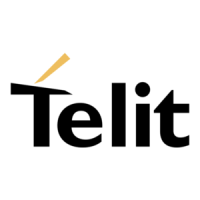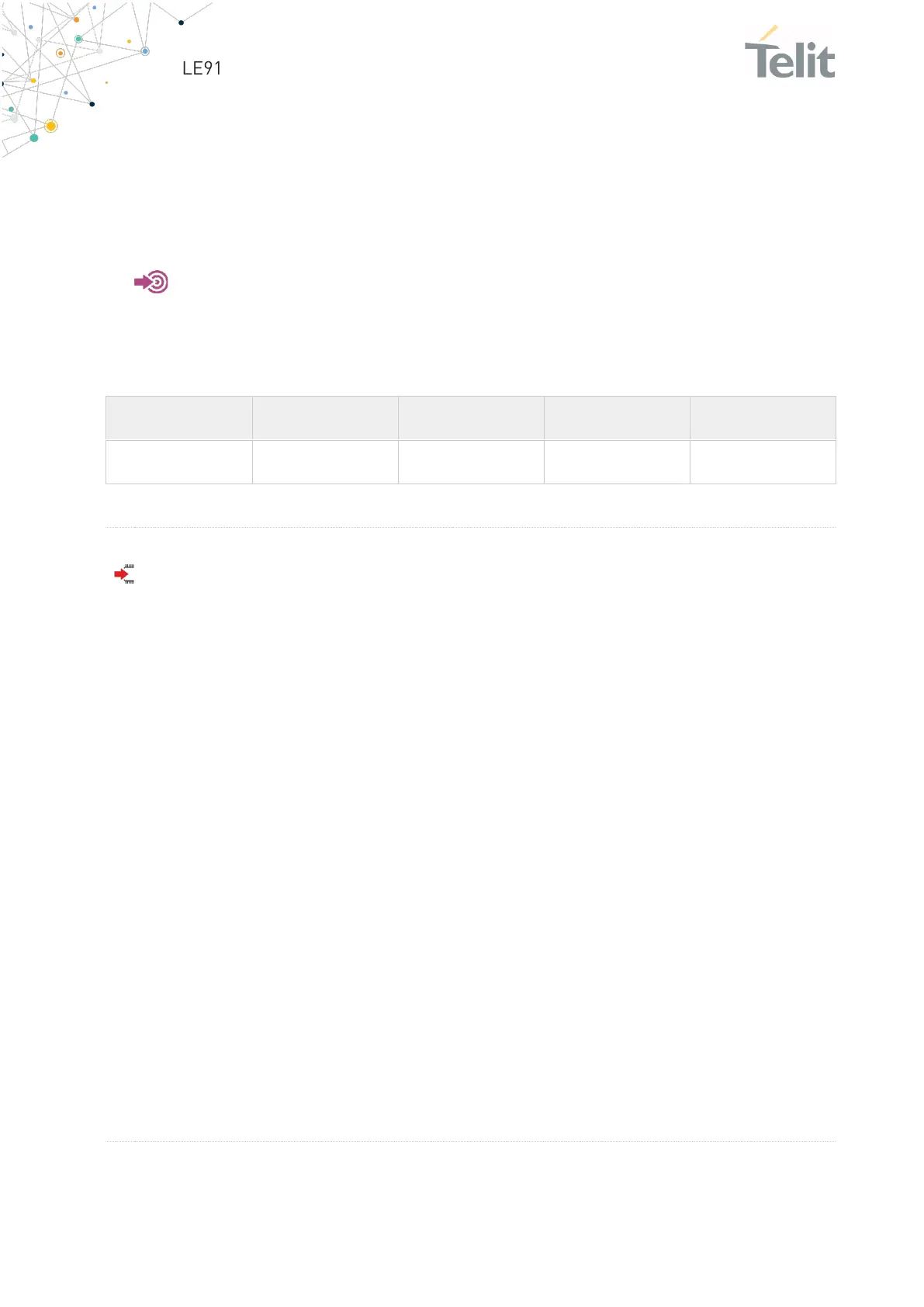3.9.25. AT+CGTFT - Traffic Flow Template
This command allows the TE to specify a Packet Filter - PF for a Traffic Flow Template -
TFT that is used in the GGSN in UMTS/GPRS and Packet GW in EPS for routing of
packets onto different QoS flows towards the TE.
AT+CGTFT=[<cid>[,<packet filter identifier>[,<evaluation precedence
index>[,<source address and subnet mask>[,<prot num(ipv4)/next
hdr(ipv6)>[,<destination port range>[,<source port range>[,<ipsec sec param index
(spi)>[,<tos(ipv4) TP class(ipv6)&mask>[,<flow label (ipv6)>]]]]]]]]]
The concept further described in the 3GPP TS 23.060 [47]. A TFT consists of from
one and up to 16 Packet Filters, each identified by a unique <packet filter
identifier>. A Packet Filter also has an <evaluation precedence index> that is
unique within all TFTs associated with all PDP contexts that are associated with the
same PDP address.
The set command specifies a Packet Filter that whom added to the TFT stored in
the MT and used for the context identified by the (local) context identification
parameter, <cid>. The specified TFT will be stored in the GGSN in UMTS/GPRS and
Packet GW in EPS only at activation or MS-initiated modification of the related
context. Since this is the same parameter that is used in the +CGDCONT and
+CGDSCONT commands, the +CGTFT command is effectively an extension to these
commands. The Packet Filters consist of a number of parameters, each of which
may be set to a separate value.
A special form of the set command, +CGTFT= <cid> causes all of the Packet Filters
in the TFT for context number
<cid> to become undefined. At any time there may exist only one PDP context with
no associated TFT amongst all

